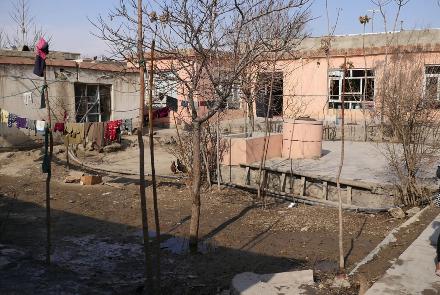A report by the US Special Inspector General for Afghanistan Reconstruction (SIGAR) indicates that according to World Bank estimates, Afghanistan’s overall poverty level increased from 55% to 72% in 2020 due to economic contraction as the country braced for a second wave of COVID-19 in early 2021.
Beyond the public-health impact, the COVID-19 pandemic has inflicted "significant harm" on Afghanistan’s economy, exacerbating many existing challenges, said the SIGAR report, which is titled "Economic and Social Development."
By the end of 2020, Afghanistan’s unemployment rate was projected to rise to 37.9%, up from 23.9% in 2019, the report says.
The World Bank estimates that the overall poverty level increased from 55% to 72% of the population in 2020 due to the economic contraction, with the IMF projecting that Afghanistan’s GDP will drop by 5%, the report says.
The report quotes a UN humanitarian affairs office spokesperson as saying that the United Nations will require an additional $1.3 billion in 2021 for humanitarian aid in Afghanistan, as the number of people who require assistance will have doubled compared to a year ago.
In a November 2020 Asia Foundation survey, 74.2% of respondents reported that they and their families had received no government support during the pandemic, the report says.
As of early November 2020, 11.2 million people, or approximately 36% of the estimated population, faced either a crisis or emergency state of food insecurity, according to the Integrated Food Security Phase Classification, a common global scale for classifying the severity and magnitude of food insecurity and malnutrition.
The report says that on December 21, 2020, acting Minister of Rural Rehabilitation and Development Mujib Rahman Karimi announced that more than 20,000 families had received food aid as part of the first phase of the government’s national assistance program.
The report also quotes the UN Development Program (UNDP) representative in Afghanistan, Abdallah Al Dardari, as saying that “four years of progressive growth” will be required to return to the pre-COVID economic conditions of 2019.
To sustain this, however, the UNDP estimated in early November 2020 that the Afghan government will need an additional $6 billion in international grants over the next five years, a 30% increase from current levels of donor funding, to offset COVID-related budget losses and maintain expenditure levels, adding that a “clear commitment to continued grant support is vital for improving confidence and investment,” the report says.
SIGAR reports that largely as a result of COVID-19, the Afghan government’s sustainable domestic revenues contracted by 2.8%, year-on-year, during 2020, according to a SIGAR’s analysis of Afghan government accounting data.
The contraction in government revenue during the first half of 2020 was particularly driven by the fall in customs duties and taxes—which comprised approximately 20% of sustainable domestic revenues in 2019—due to the closing of the border, the report said.
In July 2020, Afghan exports to Pakistan, Afghanistan’s leading trading partner, decreased by 56.8% compared to July 2019; imports from Pakistan decreased by 43.6%, the report says.
With the partial lifting of the government-mandated lockdown and reopening of the borders to trade over the summer, government revenues began to recover during the third and fourth quarters of fiscal year 1399, the report says.
The report adds that government expenditures, on the other hand, increased overall by 8.1%, year-on-year, during 2020 amid the COVID-19 pandemic.


